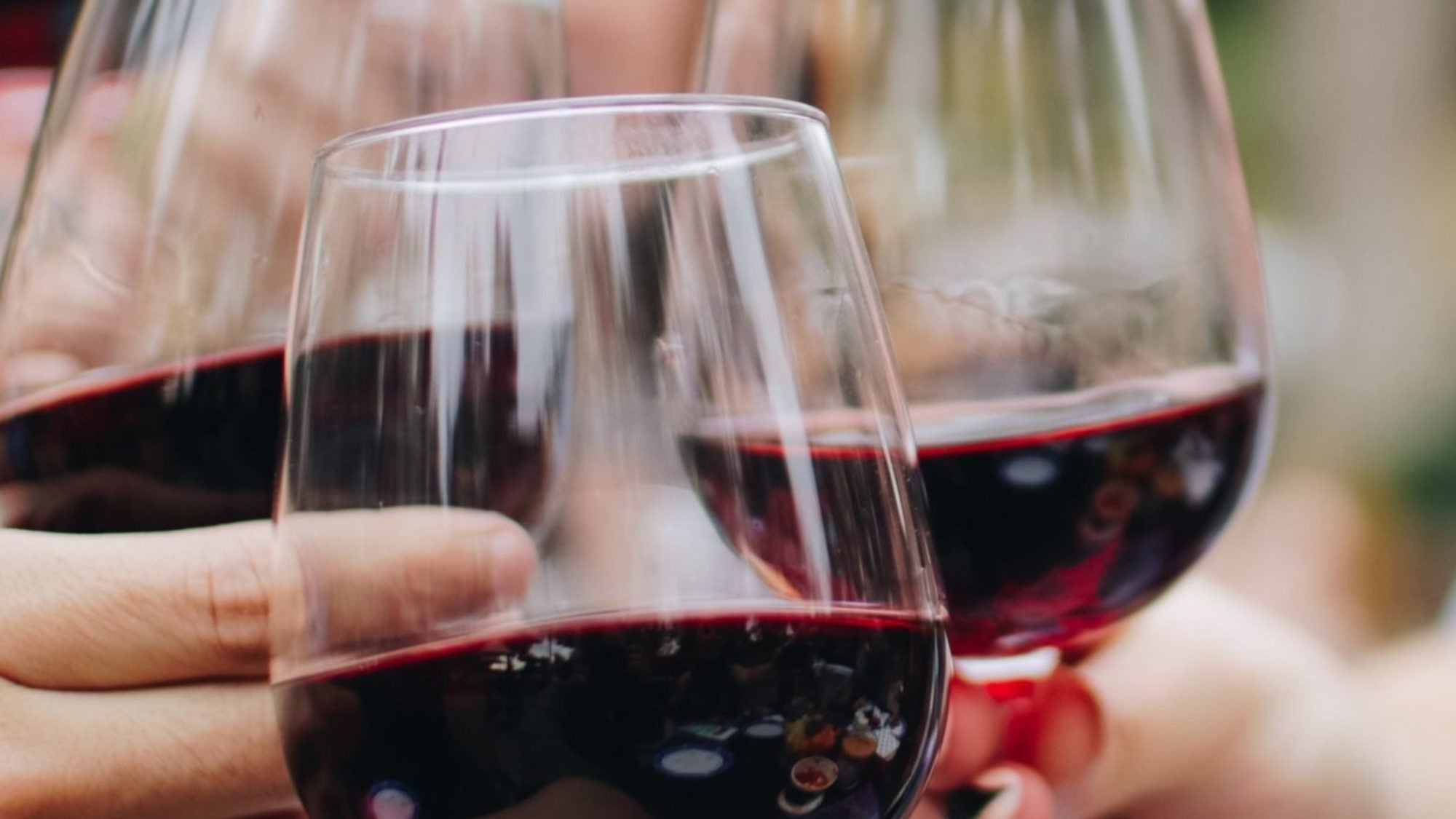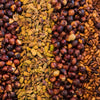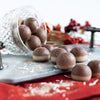Sugar in Wine: 5 Major Factors to Consider

Far too often we think long and hard about our foods, but get a bit lackadaisical when it comes to our drinks. Questions about sugar in wine come up often. We’ve all seen Youtube videos of “at-home winemakers” dumping sugar into their winemaking vat. While attempting to create a palatable wine but instead ending up with some sugary grape juice. Yet, how often does a bunch of sugar end up in the wines we see on the shelves at our local stores? This is where the confusion starts.
So, let’s clear this up by first understanding how sugar morphs from grapes in the vineyard to the delicious glass of wine in your hand.
The five major factors to consider about sugar in wine:
- Grape varietal
- Sun exposure
- Harvest date
- Fermentation
- Residual sugar

1. Grape Varietal
Every grape varietal has its own natural sugar backbone, genetically encoded since the dawn of existence. Grapes contain two primary carbohydrates, glucose and fructose, which together are known as sucrose. However, the amount of sugar in each grape strongly depends on the grape varietal.
2. Sun's Effect on Sugar in Wine
There are a number of things to consider when it comes to sunlight exposure. The amount of sunlight raining down on each leaf is roughly proportional to the amount of sugar that accumulates within these leaves and is later transported to the grape berries. Along these lines, a vineyard in a sunny spot with long daylight hours throughout the growing season would reach ripeness – and higher sugar levels – more quickly.Often, winemakers will prune and leaf trim, which can reduce the amount of photosynthesis and limit the amount of sugar accumulating in the grape berries. Less sugar means less alcohol, but adding insult to injury, these wines can often lack mouthfeel and finish. Carefully pruned vines, on the other hand, can yield wines that have very little sugar, are polyphenol-packed, and are rich and enjoyable on the palate.
3. Harvest Date
Winemakers carefully comb through their vineyards sampling grapes as they progress to maturity. Some winemakers have techy devices (hydrometers, pyncometers, brix meters, refractometers, and digital density meters). Others rely on the original testing device – their tongues, mouths, and sense of taste. They do this to determine whether or not there are enough concentrated sugars within the grape berries readying them for harvest. Winemakers measure the amount of sugar (sucrose) accumulation by degrees Brix (⁰Bx). The ideal range for most winemakers falls between 21 – 26⁰Bx. Lower Brix can indicate a number of things, such as (1) a cloudy growing season (remember the importance of the sun from above), (2) early harvest, or (3) the winemaker’s decision to have a lighter, fresher, or lower alcohol wine.4. Fermentation
Once the grapes are harvested (and hopefully, hand-picked), they often go through additional sorting and crushing before being left in a vat to ferment. During fermentation, yeast float around in the vessel snacking on glucose and fructose, breaking down these sugars to their ultimate fate, ethanol (alcohol).A few rules of thumb on fermentation are:
- Wines that are higher in alcohol are typically lower in residual sugar. This is because full fermentation has occurred and the yeast have successfully converted the sugar to alcohol.
- Wines with lower alcohol are typically higher in residual sugar. If you do not have enough yeast or stop fermentation early, you are left with a wine with more sugar and less alcohol.
- It is possible to have high-alcohol, high residual sugar wines, especially when grapes are intentionally harvested very late (think eiswine or trockenbeerenauslese). These are sweeter, dessert-style wines, and the fermentation process with them is a bit different. As the yeasts are eating away at the available sugar, the alcohol level rises – nothing abnormal about this. However, by the time the wine reaches an alcohol level of 15%, it becomes toxic to the yeast. This kills it off and leaves a handful of remaining sugar in the high alcohol, yet sweet drink. Hence, this is the reason why “Late-Harvest” wines are both sweet and high in alcohol.

Keto Sweetener Substitute
Looking for a sugar-free sweetener that looks and tastes like sugar with no unpleasant aftertaste? Here it is! Use it in place of sugar for everything, from cooking to baking. Shop Now5. Residual Sugar in Wine
Residual sugar is the amount of sugar left in wine at the end of fermentation. It greatly depends on the fermentation process, and how much of it is consumed by the fermenting yeast.As you can see, winemakers have a lot of choices to make when it comes to making wine. If you don't have the time to research each and every wine, but would like to be mindful of residual sugar, then keep the following visual handy when assessing wines:

We didn’t talk about sparkling wines, because they undergo a secondary fermentation process. But you can keep the following in mind for your favorite champagne, cava, sekt or prosecco:

Our friends and wine experts over at Healthiest Pour don’t look at residual sugar in isolation when considering the sugar content in wine, but they also look at how the winemaking process can promote polyphenols (beneficial compounds also found in spices, tea, dark chocolate, etc.) The good news is that dry red wines – those low in residual sugar – also tend to be relatively higher in polyphenols.
If you’ve got a question about wine, feel free to drop our friends a line or shoot a tweet. They’re happy to serve as your resource for considering wine as part of a healthy lifestyle. And if you're interested in lower-carb, vetted wines made without short-cuts or bulk production processes, our friends at Healthiest Pour have partnered with us to offer a 10% discount through the end of the year, using discount code: KETOLOGIC at check-out. *Note: Currently, Healthiest Pour is able to ship to North Carolina, Florida and Washington, DC.
Looking for keto drink options? Here's an article with the best and worst alcoholic keto options and another with some keto-friendly wine recommendations.
-
Posted in
Authority Article, Beginner, Drinks, Intermediate, Keto, Low Carb Diets, Nutrition, Nutrition Article




